At this point 105,029 people have been laid off in New York City but while our loris is a bit slow, there is something very wrong with the richest city in the nation looking for a new home for one of our our cutest animals and many of the other creatures of the night.
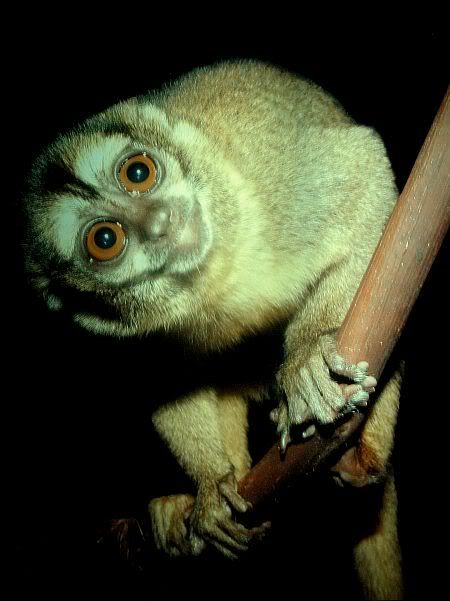
What an example of skewed priorities. Mayor Bloomberg raised two taxes to ensure there will be 500 new cops on the streets of New York this year. There are 5.3 police officers for every 1,000 New Yorkers but there was only one World of Darkness and many of the inhabitants are endangered species. Thanks to Bloomberg's thirty-three percent cut in city funding to the zoo, children will no longer learn that "when the sun goes down most of the world's animals wake up."
There is a debate going on in the Bronx. Will the zoo take a tern for the worse?
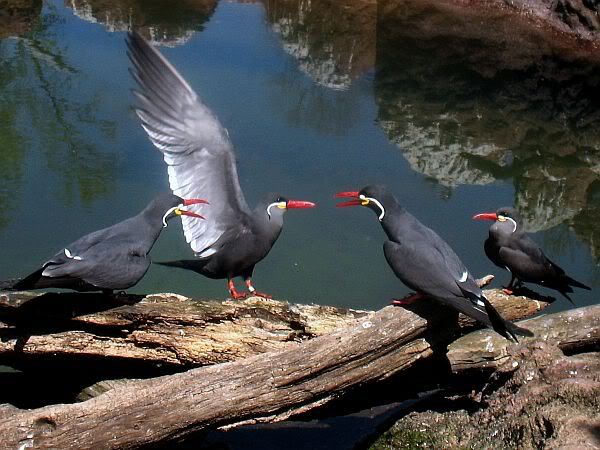
Can we really expect any answers out of a Laughing Jackass?
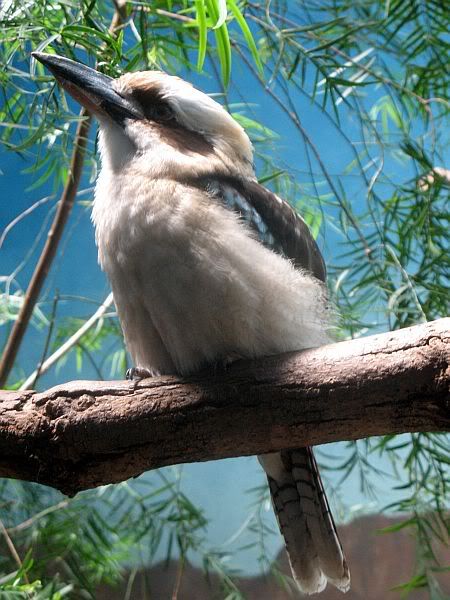
Or will Bloomberg leave New Yorkers scarlet with anger?
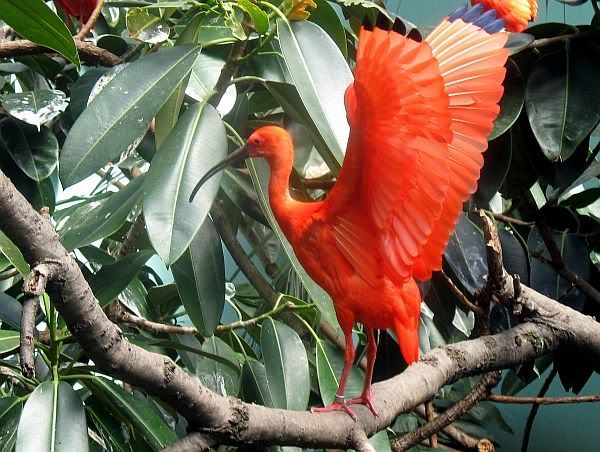
One thing is for sure, the debate is not for the birds. The animals don't have a political voice and to Bloomberg they seem like a small casualty in hard times. Animals do have some representation in the Wildlife Conservation Society. Prior to Bloomberg's cuts lower income New Yorkers also had some representation. For most of the long and distinguished history of the WCS, New York City has subsidized the lower prices charged and weekly free days in the city's aquarium and four zoological parks.
Why does the zoo deserve special treatment in these harsh times? In a city that claims there is no money left for adequate mass transportation or even food stamps for that matter asking for special consideration for a living museum may seem unreasonable but the zoo preforms a far more important service than the storage of a few animals. They are devoted to educating generations that will understand why we should make our responsibility to endangered species a priority and work to protect wildlife.
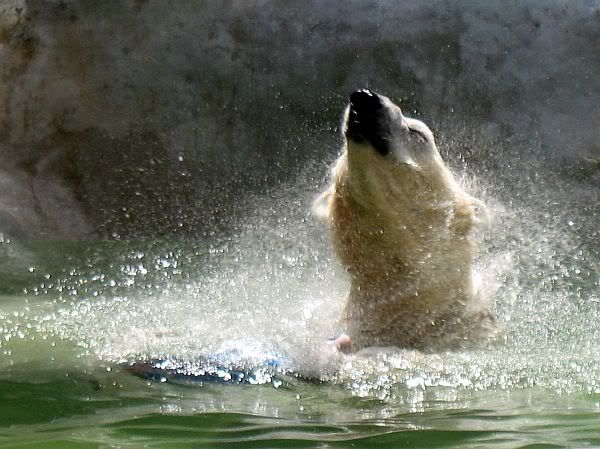
It should be looked at as a local stimulus plan. According to the Wildlife Conservation Society President and CEO Dr. Steven Sanderson "Zoos and aquariums are not eligible to benefit from the federal stimulus, leaving the city and state to support their communities and their culture." Besides the cultural institution ratio of eight dollars spent by the public for every dollar given by government, Dr. Sanderson added a few more reasons.
Specifically, WCS currently pumps more than $400 million annually into the state’s economy. More than 4 million visitors come to our facilities each year. Further, we are the largest student employer in the Bronx, hiring more than 800 teens each year; and we employ more than 1,000 seasonal workers, including students, retirees, and people on public assistance. Almost all of our full-time staff in New York – currently about 1,200 of our colleagues – live in New York.
We educate more than 2 million schoolchildren and train more than 2,000 teachers annually. Our education programs will focus on our core education mission – our classroom programs and our teacher training.
Because we must reduce our payroll by approximately $10 million going forward, we invited all staff to apply for an attractive voluntary retirement or separation package. More than 100 people took advantage of the offer. Due to the success of that program, nearly 60 percent of the reduction has been achieved without a single layoff. Now, we have begun the involuntary reductions to meet the balance of our obligation to assure the long-term financial health of WCS.
As we make these difficult decisions, we ask the City of New York for full restoration of its investment in the Bronx Zoo and New York Aquarium, along with a city stimulus plan that would allocate funds for job creation at all cultural institutions in the city.
Another reason, the biggest reason, what's in a name? The overseers of the largest zoo system in the nation that is not just suffering from government cuts but also seeing private donations dry up is called Wildlife Conservation Society.
The Bronx Zoo opened its gates to the public on November 8, 1899, joining the ranks of New York City’s most beloved cultural institutions. Its success led WCS to acquire four more wildlife parks over the course of the twentieth century. In 1902, WCS took over management of the New York Aquarium, then in Manhattan’s Battery Park, and in the mid-1950s, relocated it to Coney Island, Brooklyn. In 1988, the former menagerie in Manhattan’s Central Park reopened as WCS’s Central Park Zoo. The Queens Zoo and Prospect Park Zoo opened in 1992 and 1993, respectively. Together, the five parks draw more than 4 million visitors a year.
And what does the Wildlife Conservation Society do? Just about everything they can with their limited funds to protect wildlife. This twenty-one page document begins to explain the work being done in fifty-three nations. They are everywhere. If you watch the PBS series Nature, the WCS was the central player in two out of the last three episodes. In The Thin Green Line the WCS is working to save our frogs and amphibians. In The Loneliest Animals they are working to save whoever they can.
The WCS is the political voice animals. The WCS not only collects and breeds endangered species, they try to ensure that there will be a place to put them back. Diplomatic efforts to save the twenty percent of Madagascar that have not been developed begin at the WCS.
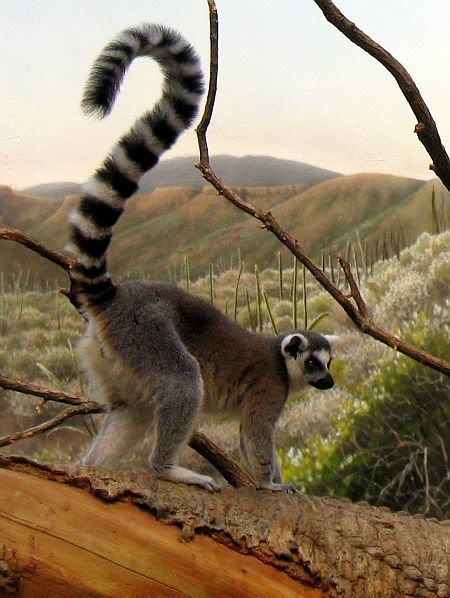
The recent news of Afghanistan setting aside its first national park, that was the work of the WCS. In another recent news item, had swine flu come from the wild than the WCS would have been the place to go. Last year the WCS linked global warming to the spread of disease. Swine flu may not have filled the bill but when disease jumps form wild animals to humans such as the avian flu strain the WCS was the only place to turn for research.
Did you know that according to the Species Survival Plan of the estimated 25,000 species that will not survive this year an endangered species must qualify for the attention needed? Because of the accelerated pace of extinction and limited funds a species must be marked as a "flagship species," well-known animals which arouse strong feelings in the public for their preservation and the protection of their habitat.
Now that is some really screwed up priorities but even though it has been determined to be not that important by the New York City government, the job of zoos is to create those strong feelings. As threatened as the world's animals are in their native habitats, they should at least have some security in their artificial habitats.
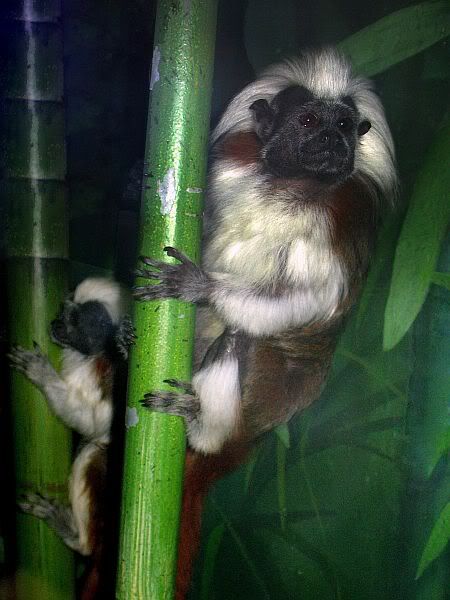
When the news of the loss of World of Darkness, Rare Animal Range and exhibits of the Arabian oryx and blesbok broke last week New Yorkers were up in arms. There is a new word that is often heard in this recession at museums and cultural institutions. The word that means selling off parts of the permanent collection is "deacquisition." That doesn't describe the emotions involved in the selling off of some of the permanent collection in a living museum.
When they locked the door to the World of Darkness on Tuesday the elder children were standing outside crying while the toddlers had no idea what they would be missing. But the final curtain for these educational exhibits were not the first cuts. There was a far greater loss this month when the 112 year old "Wildlife Conservation magazine went extinct."
The magazine’s final cover featured a white goat looking down from a cliff and the words, "High times and low." A Wildlife spokeswoman said some 92,000 people subscribed to the magazine.
"Along with everyone else on the planet, we have been caught in the perfect economic storm, but that doesn’t make the situation any easier to face," the editor’s note said.
Sadly the staff has been let go but the real tragedy is the loss of a wealth of information going out to those 92,000 people each month. 114 years ago the first issue taught people why the American bison needed be bred in captivity and returned to the American plains.
Westward ho! In 1907, 15 Bronx Zoo bison boarded railway cars and wagon trains headed for Oklahoma’s Wichita Mountain Preserve. These early pioneers were charged with an historic mission: to help the American bison recover on the Western Plains. Where millions of bison had once roamed, only a handful remained in the American West at the turn of the century. Hunting and westward expansion had driven them to the brink of extinction. The founders of WCS created the American Bison Society (ABS) to restore this national icon, and they did: Today, 20,000 wild bison roam the Western Plains. This population has its roots in the bison bred at the Bronx Zoo that were used to re-stock refuges in Oklahoma, Montana, South Dakota, and Nebraska—many of which WCS helped to create. The herds of Yellowstone and other national parks still share a family tree with those at the Bronx and Queens Zoos.
Since the days when Theodore Roosevelt became the honorary president of the American Bison Society there have been over a century of stories about the condition of our natural environment, threatened species and the informative stories about animal behavior.
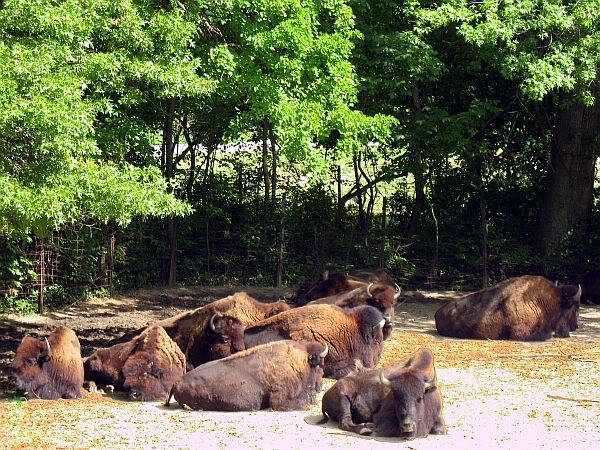
Stories like this crimson breasted beauty longing to see the outdoors again. The Guam Kingfisher calls the World of Birds at the Bronx Zoo home but there are none left in nature.
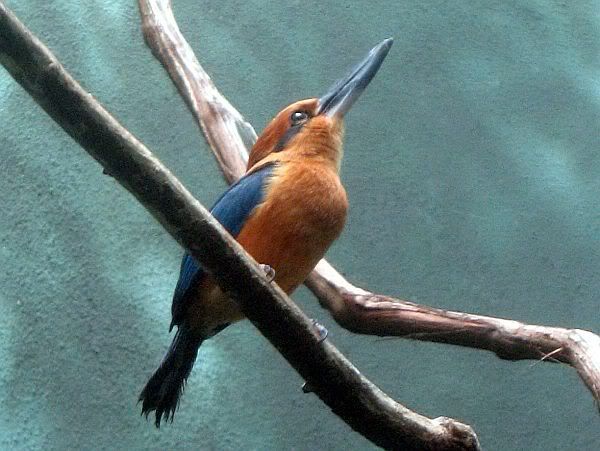
Here’s another story of the good work of zoos. If you were a subscriber of Wildlife Conservation Magazine you would have read about how the Père David's Deer was saved from extinction. This large deer has been extinct in nature for a long time. The last of these Chinese deer to live in their native homeland survived only in an emperor’s private menagerie and they were wiped out during the Boxer Revolution. Some had been exported to Europe and through the conservation of zoos the species still survives.
As the Animals' Best Friend the hopeful stories are endless at the Bronx Zoo. Of the many success stories the WCF can tell the captive-management program and their help in the reintroduction of the Formosan Sika Deer to the wild is just one story. Now the Père David's Deer are following in the footsteps of their smaller cousins.
The Bronx Zoo was the first zoo to phase out cages and exhibit animals in naturalistic habitats. Now in the melting pot of New York City these Chinese immigrants known as the Père David's Deer enjoy living in their own large section of Bronx forest.
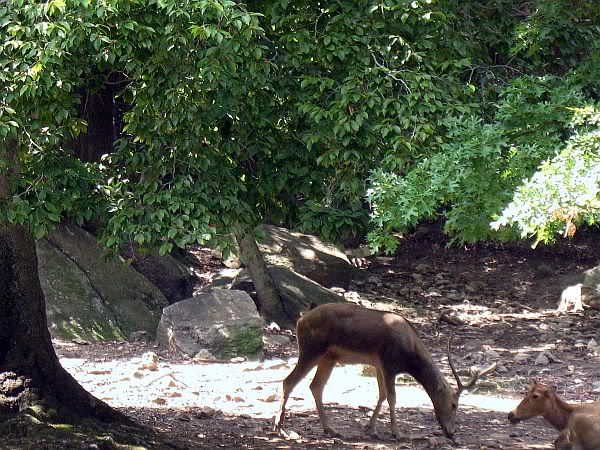
Like the many dying newspapers and magazines in this era the Zoo promises to improve the website but this could be seen as a threat to national membership. Seriously the number of members greatly influence national politics and the support the federal government gives to the Wildlife Conservation Society.
The death of the magazine didn't create much of a stir but evicting endangered species sure did.
 New York Post: "Deer, bats, porcupines, foxes, lemurs, caimans and antelopes will be pink-slipped as part of the 114-year-old zoo’s effort to cope with a $15 million budget shortfall."
New York Post: "Deer, bats, porcupines, foxes, lemurs, caimans and antelopes will be pink-slipped as part of the 114-year-old zoo’s effort to cope with a $15 million budget shortfall."
Democratic Councilman Domenic Recchia of Brooklyn is not pleased. "When I heard that the animals were going to be impacted and that we are going to have to ship our animals off to other zoos, I’m devastated by this. We are losing our zoos and wildlife," Recchia said.
Meanwhile, the $1.3 billion Yankee Stadium opened last week. That’s government. Spend like there is no tomorrow in good times, lay off the lemurs during bad times.
Those words do bring up a comparison between George Steinbrenner, the richest welfare recipient in the Bronx and the borough's leading educational institute. As to the Yankees, well that are having some trouble selling those $2500 seats but they are doing just great. The most valuable team in baseball just cut those $2500 seats down to $1250.
The city with the biggest municipal budget had plenty of cash for the Bronx's fat cat but can't help the zoo? Seriously the mayor and his council have incited school children protest. BX. KIDS BARING FANGS is not New York Post hype, I was there to see it. To Bloomberg children must seem just like animals since they also don't vote. Even though all his money make him seem bulletproof in the upcoming election that he overturned a twice passed voter referendum to run in, his Democratic opponents Bill Thompson and Anthony Weiner should take note of children crying in the streets.
Wouldn't it be nice if politicians began giving the animals a fair shake? It doesn't sound like too much to ask because we need biodiversity far more that wen need government.
I know the zoo is giving the animals a fair shake. I can attest to the education for children in this sort of a New York minute that represents the importance of the work done by the Bronx Zoo. Very similar to exchanges I often hear but this is just the freshest. Last Saturday as I walked out of JungleWorld I overheard a conversation between mother and daughter.
I had just taken a few photos of some of the newer zoo babies inside, an adorable joey of the tree kangaroo, an Ebony Langur and tell me that baby silver leaf monkey doesn't look human.
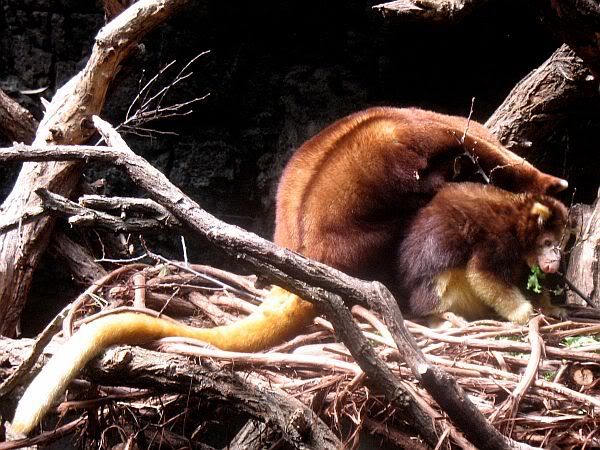
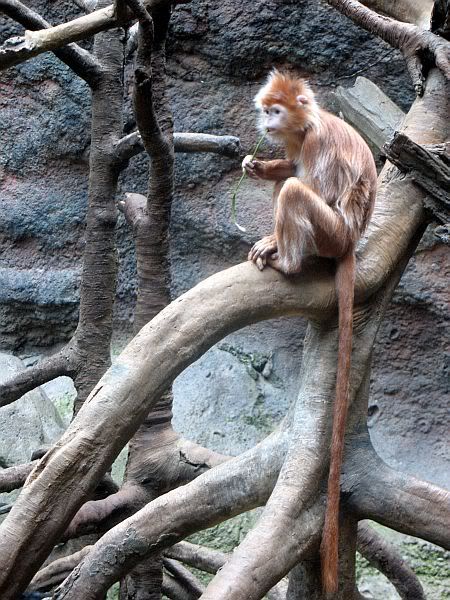
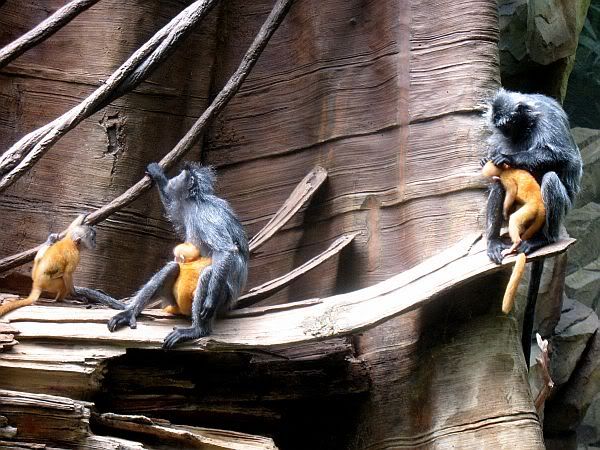
When you leave JungleWorld you pass through one of the many places devoted to heightened awareness. At the exit you pass a gauntlet of signs with the first two ticking away in a similar fashion to the the national debt clock.
The first one is counting down the acres of rain forest being lost. That number is just about half of what it was when JungleWorld opened in 1985. At that sign the daughter asked "Mommy where will the animals live?" The mother replied "Don't worry about it."
The second is "Crowding Out Nature." On June 21, 1985 the world's human population was 4,843,083,596. The human population on that clock Saturday was 6,743,021,424. The daughter asked "Don't old people die when babies are born." Mother told daughter "That's called the law of averages."
Mother steered daughter clear of the third sign that doesn't need an electronic counter but offers a statement that everyone should be thinking about.
In the end,
we will conserve only what we love,
we will love only what we understand,
we will understand only what we are taught.
-Baba Dioum
The zoo often ends up walking a fine line between education and parents. I remember a few years back when the lawn of the historic Astor Court was decorated with tomb stones for some of the species we already extinguished. It was gone the following weekend and when I asked why I was told "angry parents."
In The World of Birds you will find a tribute to many of the bird species that we've wiped out. It is one of the loneliest places in the Bronx. That sad room is not the only "lesson" to be found there. Lessons is what the ornithologists call the cues for children like the explanation of the horrors of the bird trade. They can tell you stories about overheard conversations like "Mommy why is there a chainsaw in the forest?" being answered with "They're renovating" and the answer to "What's the rifle for?" is often "That's how the bird keepers train the birds."
There are plenty of stories you can hear from the ornithologists but my favorite is the story of O.T. There is a beautiful always preening Palm Cockatoo that lives across from a Great Hornbill and a Toco Toucan. His name is O.T. and he like to shout it out occasionally so the other birds will know who he is.
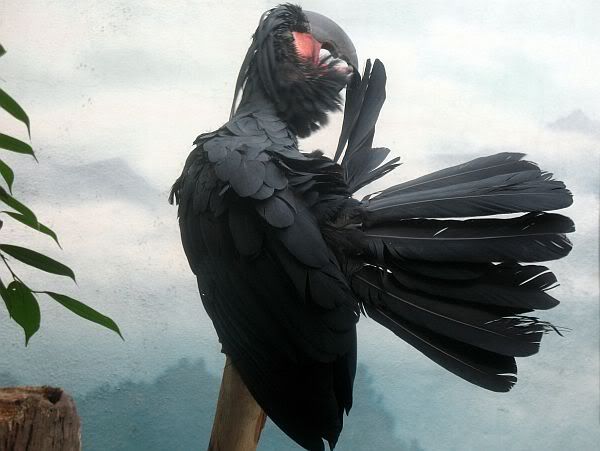
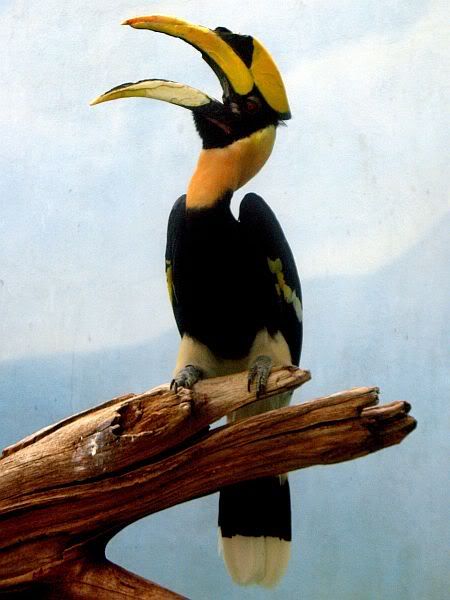
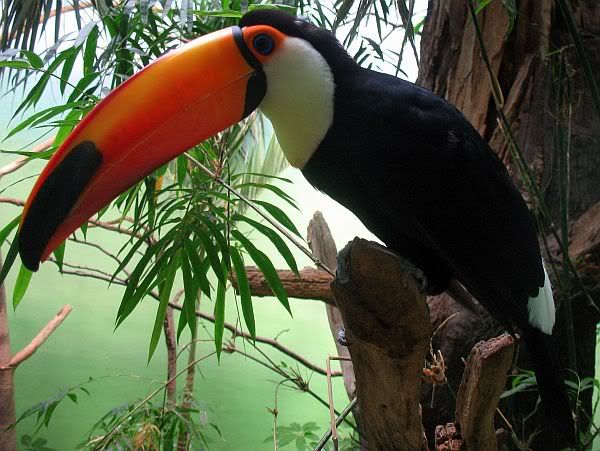
O.T. got his name because this happy fella was hatched at the zoo. Apparently well trained humans make better parents than Palm Cockatoos and the young hatchling was hand reared on a twenty-four watch. The ornithologists made a whole lot of overtime pay watching out for little O.T.
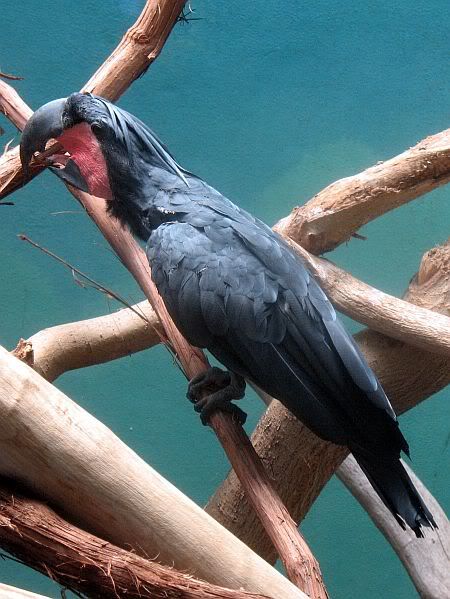
Not all parents don't get it. Many do and The Bronx Zoo also acts as a community activist. I was there for the Run for the Wild on Saturday. The guy in the promotional video may seem lonely but there were thousands running. I ran for pooties. Well actually I walked for a big cat. Who would you run for?
Here's five runners I met last Saturday.
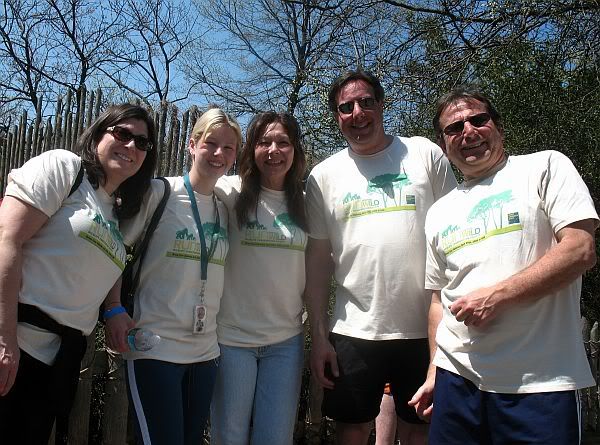
The days of animals in cages are ending. Beginning with the Bison prairie in the Bronx, imprinted miserable animals have slowly been replaced with lions and tigers and bears with a little elbow room. Now there is an African Plains in the southern part of the zoo. From March to November you can see giraffes roaming the veldt. Here's Mama giving baby a big kiss.
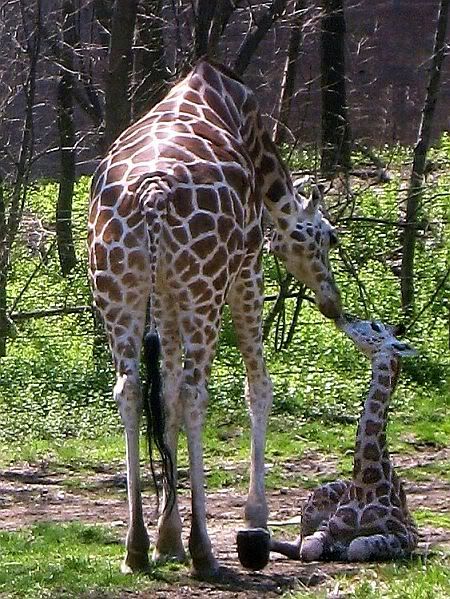
On the Bronx version of the African Plains you can see Grévy's Zebra and Nyalas grazing with one of the handsomest animals you'd ever want to see hoping one of them would keel over, the Marabou Stork.


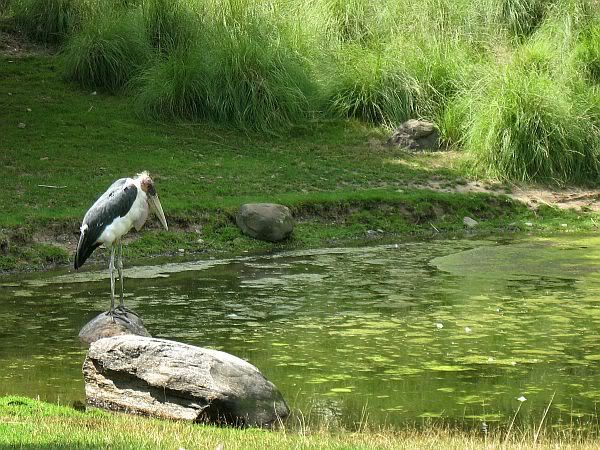
In the center of it all is a big triangular island where the newest star in the Bronx resides. Now the Bronx has Moxie!
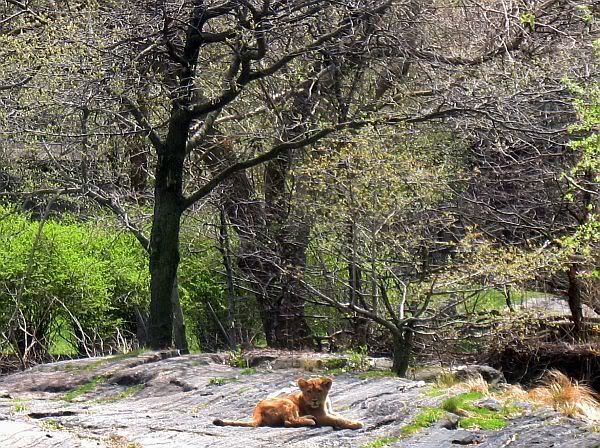
There's the proud papa M!Wasi and happy mama Sukari staring through the forsythia at the zebras remembering the good old days.

Sukari always keeps an eye on her little girl.
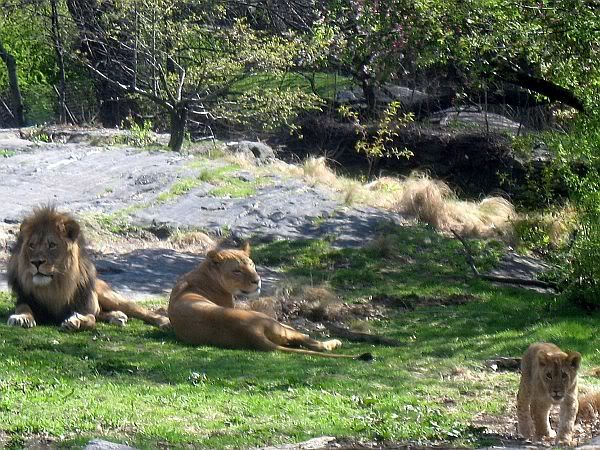
One of the earliest of these new environments is a simulated Himalayan Highlands that opened back when there was still a Lion House with big cats nervously pacing back and forth. The Snow Leopards are very happy with their new home but they are long time residents.
In 1903, the Bronx Zoo became the first zoo in the Western Hemisphere to exhibit these big cats. Nearly 80 cubs have been born at the Zoo over three decades as part of the Species Survival Plan, a cooperative breeding program. Many of the offspring have been sent to live at zoos across the U.S. and beyond. Today, Wildlife Conservation Society field scientists are working with colleagues in the mountains of Central Asia to identify the sites across the cat’s remaining range that are most critical for its survival.
As you walk up the hill to this secret world it really does begin to feel like entering a mountainous region of Tibet. I can remember when it first opened and people were complaining because the animals could go places where they could not see them. If you are lucky you may just see the very secretive and highly endangered snow leopard where they are enjoying a little bit of freedom.
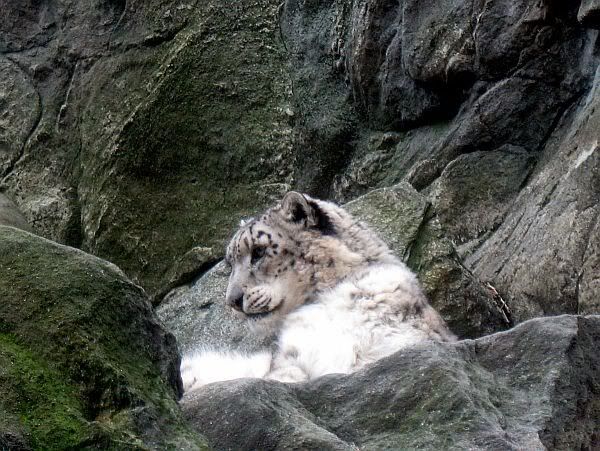
What everyone should see in the Himalayan Highlands is the story of a Himalayan sheep herder. For his livelihood the man has thirty sheep to feed his family and his justification for killing snow leopards is that they took three of his sheep in the past year. For this man those three sheep were ten percent of his worldly belongings. What would you give to save the endangered snow leopard?
Back when Hugh Miles got the first ever footage of this elusive big cat hunting, feeding and mating in the wild for the the PBS series Nature;
An interesting fact was revealed. Of the many responsibilities the WCS takes on, one of them is replacing the three sheep that sheep herder lost so he will stop killing snow leopards. Don't tell any Republicans though.
Presently the WCS receives $195 million per year from the federal government and will continue their core mission priorities of protecting wildlife and wild places, leading the world in wildlife health and educating the world about conservation and the environment.
But in these trying times that support is also on shaky ground. The last thing these snow leopards need is some Republican sitting across from Wolf Blitzer and talking about "Himalayan welfare recipients during these harsh times." The snow leopard needs a break.
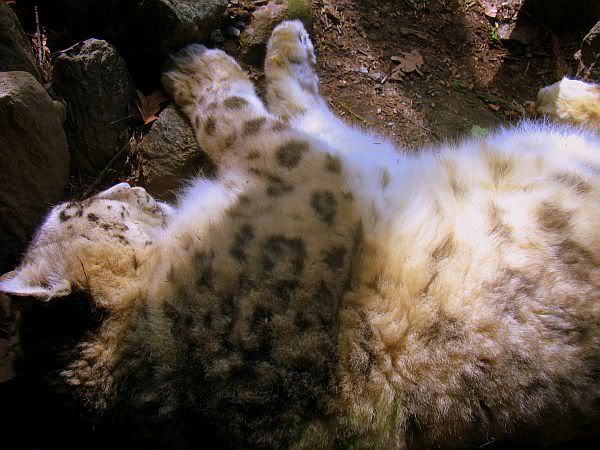
This is Sasha, another big pootie that would love to discuss zoo financing. Sasha is almost a twelve years old male Siberian tiger and weighs in at 436 pounds. Sasha who enjoys the occasional "bloodcicle" also loves his ten thousand gallon water dish and the three acres he has to roam around Tiger Mountain.
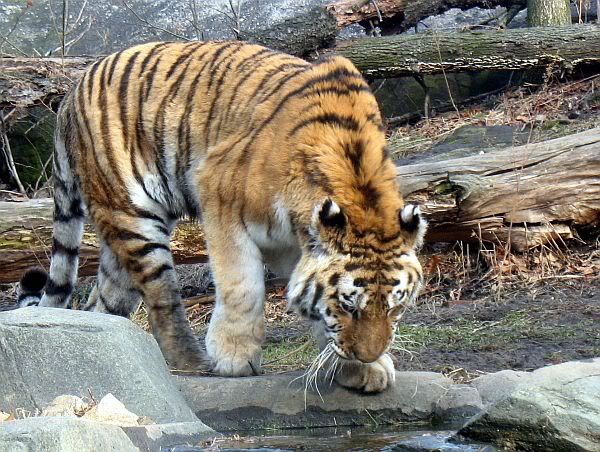


This is Taurus. She is a lightweight but she is not people shy and would enjoy roaring at Michael Bloomberg. Taurus delights the children when she comes up for a nose to nose experience. She also likes to take naps with her head right against the glass.
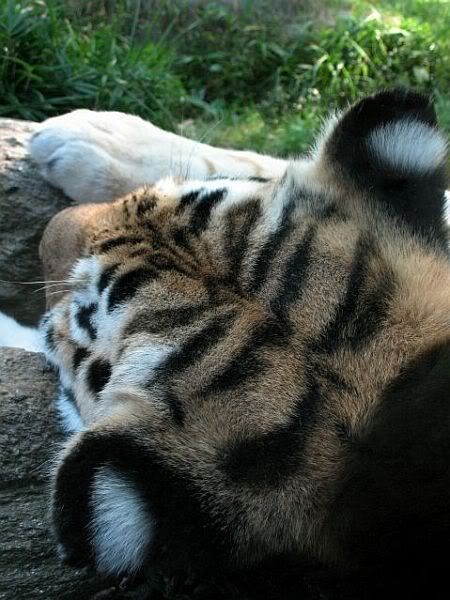
Everyone is in shock, the disbelief has even reached the Congo. The Wolf's Monkey being extremely social is worried about buddies in The World of Darkness in their darkest hour.
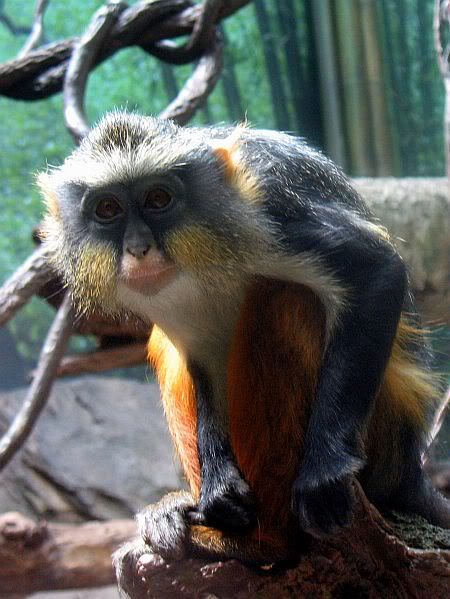
The Okapi is beside himself. Did you know that David Livingstone thought this animal was a composite? Or was it H. M. Stanley? "Dr Livingstone, I presume?" What they found was an animal with horns, a zebra's back and a tongue like an aardvark.
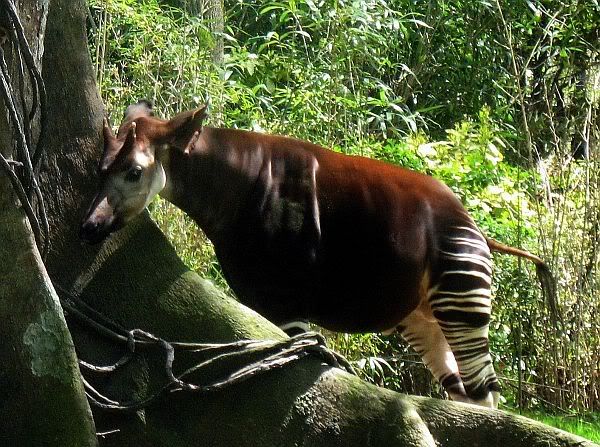
Big Daddy wants answers too. He's talking to you Bloomberg but 800 lbs. is an exaggeration. 400 is the real maximum for these guys.
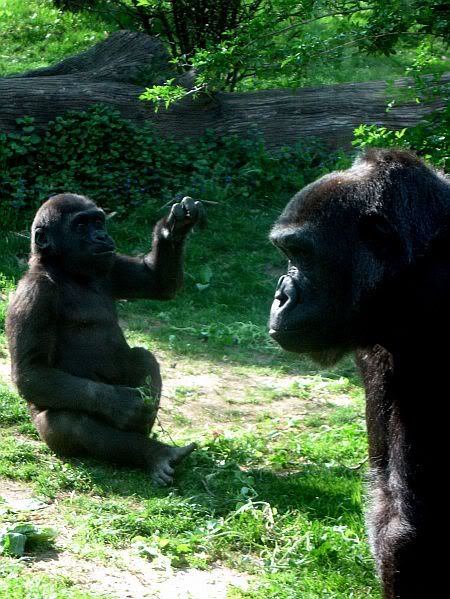
But if you want to see some really nervous animals then go next door to the World of Darkness. Over at the Baboon Reserve the Nubian Ibex for whom the biblical heroin Yael was named, seems ready to swing a hammer.
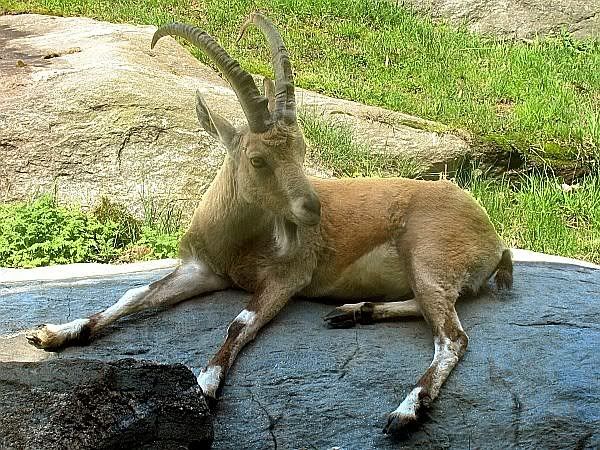
The Rock Hyrax are looking for a hole to crawl into.
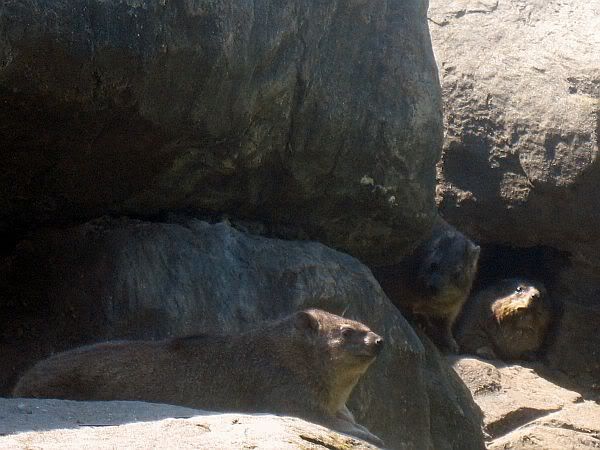
And the ruling sisterhood of gelada baboons are storming off in anger.
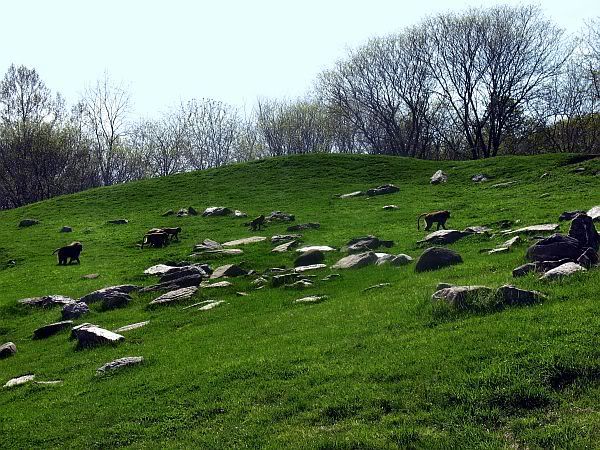
The Zoo did much better with the state than the city. The state of New York was not planning to cut the budget of the Bronx Zoo but totally eliminate it. But eight years of experience with soliciting George W. Bush to save wildlife must have taught them a trick or two.
The unemployment line has one less porcupine since they put a poky little fella named Wednesday to work in two Public Service announcements. The first video went viral but the second one did the trick.
But the city will not budge. With all that stimulus money floating around stimulating young minds just isn't a priority to Bloomberg. The claim that the zoo is good for the economy goes unanswered. Had you gone to the zoo this weekend, you would have been asked to sign this.
Petition to Restore City Funding to the Bronx Zoo and New York Aquarium.
I care about the environment, conservation, education, and economic development in New York City.
I urge Mayor Michael R. Bloomberg, Speaker Christine C. Quinn and the New York City Council to continue to fund and invest in our city's 34 cultural institutions including the Bronx Zoo and New York Aquarium.
The Bronx Zoo and the New York Aquarium educate and inspire teachers and children. They are a core to stabilizing the city's economy by providing good paying jobs and supporting local businesses and are considered an integral part of the community. They work jointly with schools and area community groups to provide free or affordable access and programing for the most vulnerable citizens.
According to a 2008 national public opinion survey, 79 percent of Americans believe that zoos and aquariums are good for the local economy, and an impressive 80 percent believe that zoos and aquariums are important enough to local communities to be supported by government funding.
We realize that the city faces challenging fiscal realities realities but we need support form City Hall to weather the current financial storm. We only ask that the city recognize the importance and unique role of cultural institutions by restoring our funding.
It's really not about the end of the World of Darkness, Rare Animal Range and exhibits of the Arabian oryx and blesbok. It's about priorities and supporting wildlife. Something that we should be long past is cutting back on zoos every time the economy takes a turn for the worse. Oh the zoo will survive but they should be doing more than surviving.
There are a few more zoo babies to show. The old Lion House has become one of the greenest buildings in New York City and now houses Madagascar! There is a Red Ruffed Lemur that is going for a ride in there.

And right outside at the sea lion pool Katie is giving Moxie a run for the money.
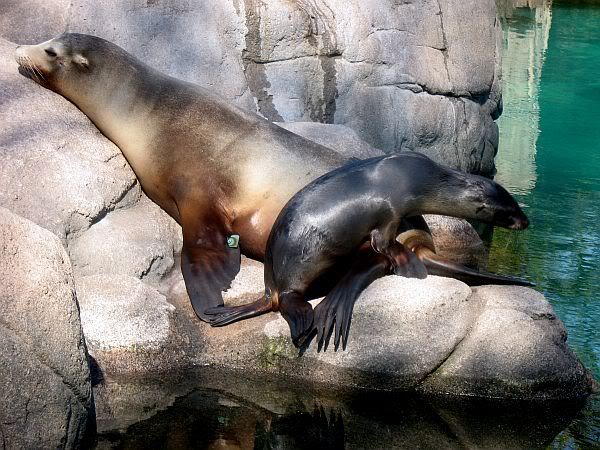
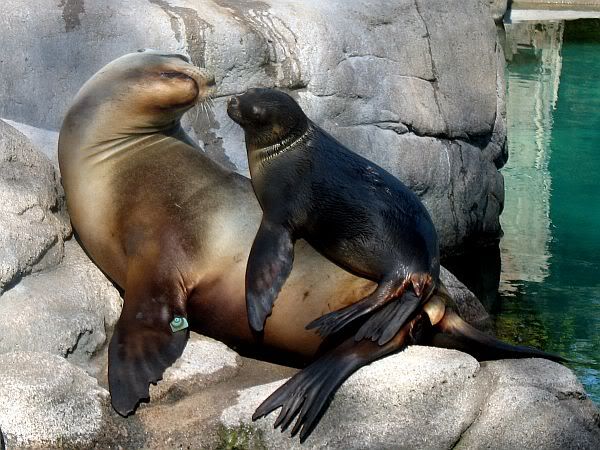
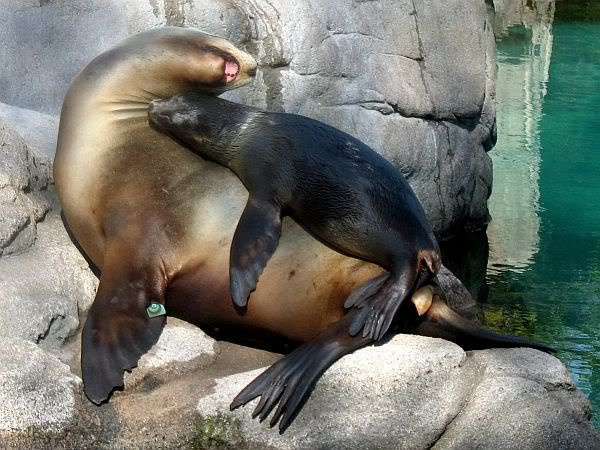
Some of the elder residents are very popular. Jughead passed away and I'm not sure where Archie is but those two old gals Betty and Veronica always like to go for a late afternoon swim and pretend they don't hear the zookeeper calling when it comes time to turn in for the night.

They are a couple of old love birds.

And Tundra who sadly has become a solo act since Fubo left us always loves to play. Tundra loves the attention and now he always hears children telling their parents that they must save the Polar Bear.
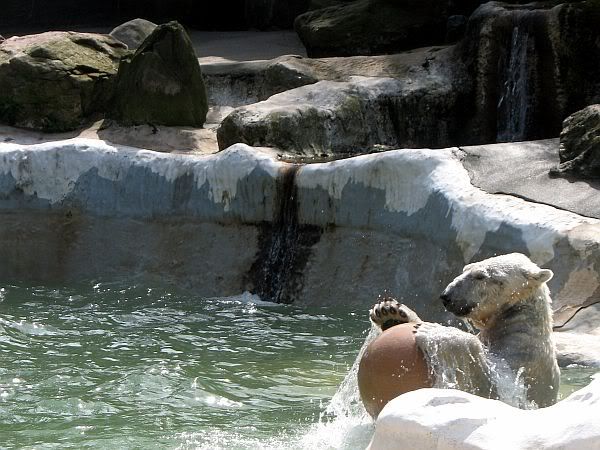
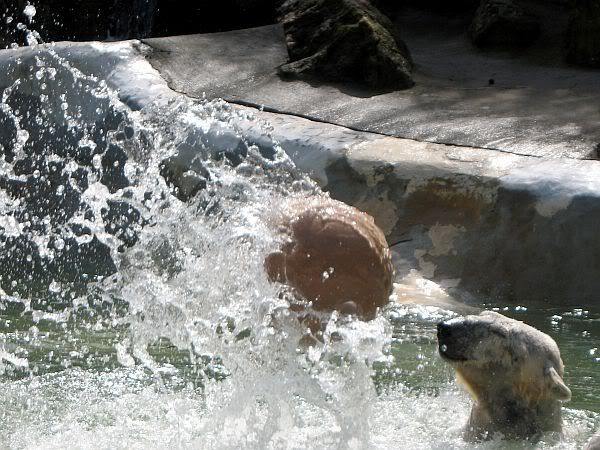
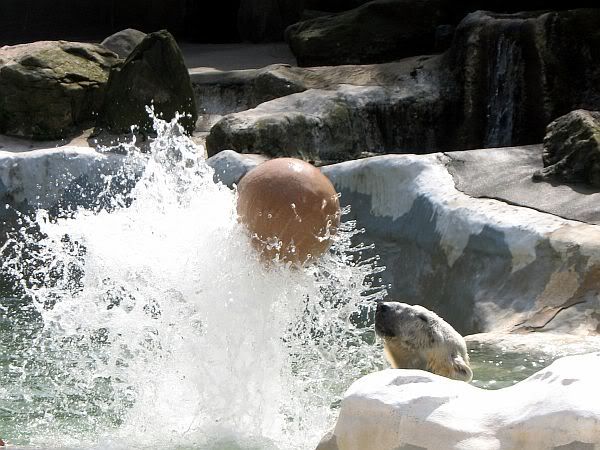
Just a little something to think about. Most of the wildlife conservation you hear about is in developing nations but did you know that there are more Siberian tigers left than grizzly bears? The Grizzly is also so subdivided that the gene pool is in danger of failing. Now we all know why they kill Siberian tigers. They are a threat to poor people's livestock and because these people are so poor black market prices for tiger parts will feed their families. The grizzly is an American animal. What's our excuse?
Here's a little Bronx Zoo trivia. Probably not this panthers but the original panther in the wonderful JungleWorld had a little problem when they got there.
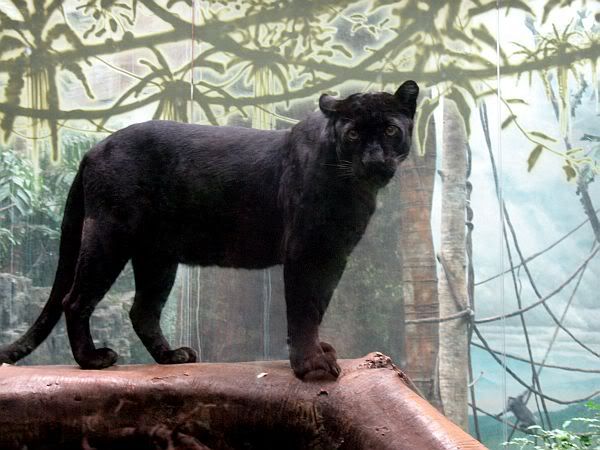
Many animals come to zoos via U.S. Customs. Americans who want man eaters as pets. Back in 1985 that's how the panthers got there. Notice the flattened branch in the tree. That happened after JungleWorld opened. They had to call in some carpenters to modify the branches because the panthers were falling out of the trees. They had been declawed.
Here's a scene from JungleWorld last week.
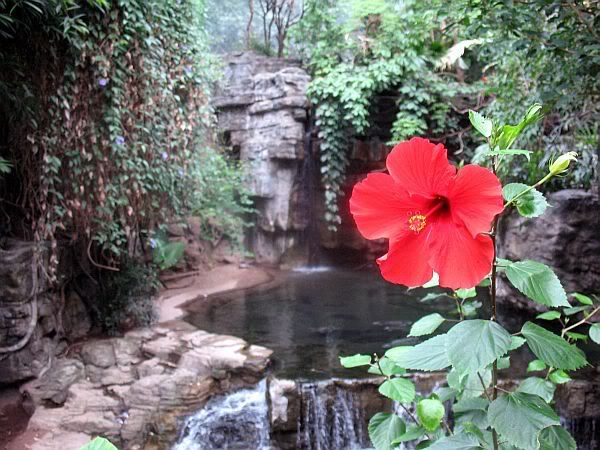
These are changing times. In truth the Bronx Zoo may have wanted to get rid of the World of Darkness. It certainly didn't close due to lack of popularity. The place is always packed, especially on hot sunny days. The World of Darkness for forty years switched day for night. The WCS is one of the greenest organizations in New York and while they closed it because of extremely high cost they may have closed it because of burning all of those electric lights at night.
But it is hard to imagine those lights being a waste of electricity having seen the delight in children's eyes as they watched the naked mole rats in their darkened habitrails or having heard the sequels of delight as kids watched the three toed sloth or the many lemurs climbing through the trees. All the different species of bats were also popular. Even I will miss staring contest with the glowing eyes of of nocturnal jaguars.
And there is another budget cut that didn't get mentioned much. Just like the World of Darkness the Skyfari made it through many previous recessions. High maintenance cost were turning the zoo's third most popular attraction from breaking even to going into the red.
Besides being a green means of transportation across the 350 acre park that took children and adults from the main parking area all the way to Wild Asia the Skyfari also offered some unique views of the habitats and just a little bit of fear.
The cables are already gone. The sign at the entrance points out the ride made it through several other recessions.
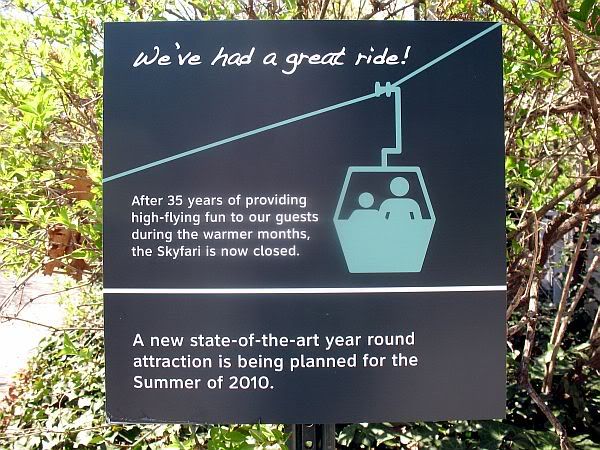
And if you walk up the hill you can find an air tram graveyard that once provided many local jobs.
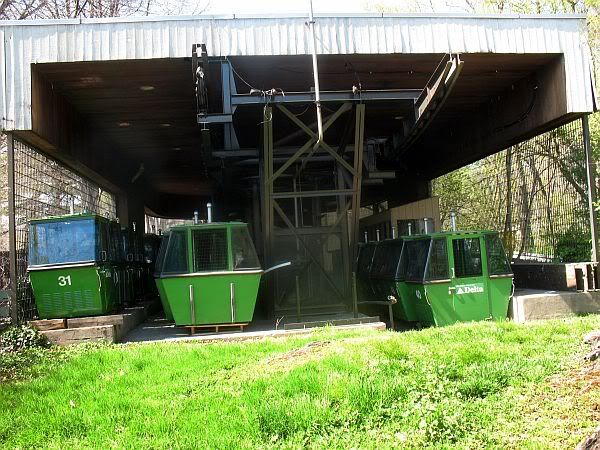
Here is the now shuttered World of Darkness. In the background you can see an upright from the Skyfari.
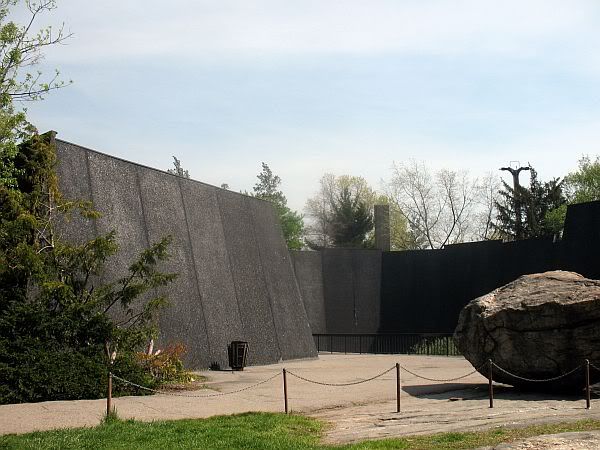
In the foreground, that glacial erratic once had a significance that almost nobody remembers. Before the world of Darkness was built in 1969 this was the sight of the Rocking Bolder Cafe.
"WCS’s system of wildlife parks leads the world in the care of animals and staff dedication to animal enrichment, science, and exhibitry. "
Since 1895, WCS has worked from our New York based Bronx Zoo headquarters to save wildlife and wild lands throughout the world.
We uniquely combine the resources of wildlife parks in New York with field projects around the globe to inspire care for nature, provide leadership in environmental education, and help sustain our planet's biological diversity.
Today WCS is at work in 53 nations across Africa, Asia, Latin America, and North America, protecting wild landscapes that are home to a vast variety of species from butterflies to tigers.
Our pioneering environmental education programs reach millions locally, nationally, and internationally.
And the more than 4 million visitors who annually experience our Bronx Zoo, New York Aquarium, and Central Park, Queens, and Prospect Park Zoos are encouraged to learn about our natural world, and inspired to care about its future.
Someone else needs to look out for wildlife.
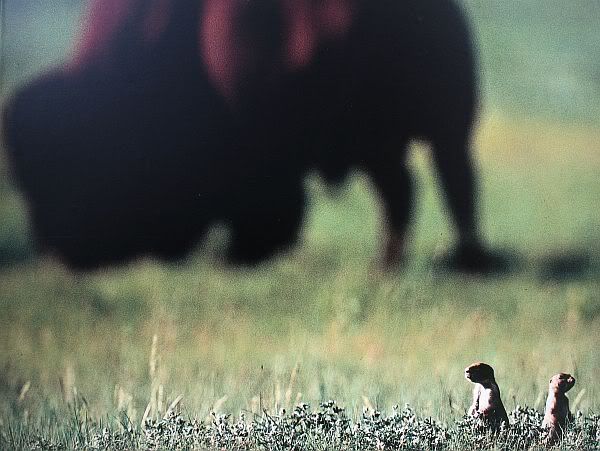
What can you do? Please watch Nature on PBS with your young ones and help the next generation understand the importance of biodiversity. When you pay your public television station membership, please mention their work for wildlife. Visit and support your local zoo often and join the Wildlife Conservation Society so you will be counted as a protector of wildlife. But most of all, please harass your representatives to protect wildlife and repair the delicate imbalance that we haves caused.
Action Alert: byteb offers Action alert link from Bronx Zoo site!!!!!! in the comments.
This site from the Bronx Zoo provides a direct link to Mayor Bloomberg so that ppl can express their feelings about the lack of funding for the Bronx Zoo and NY Aquarium plus an online form letter to Councilwoman Christine Quinn who is crucial in restoring funding. Fill out the form and it immediately is sent to Quinn. Bloomberg wants to be mayor again...well,follow the Bronz Zoo link and let him know how you feel about his part in defunding the Bronx Zoo.
Photo credits: While I've taken all but the TMZ composite with my trusty little Canon Surshot A630 at the Bronx Zoo, the first and last photos are actually pictures I took of billboards in the Zoo.


